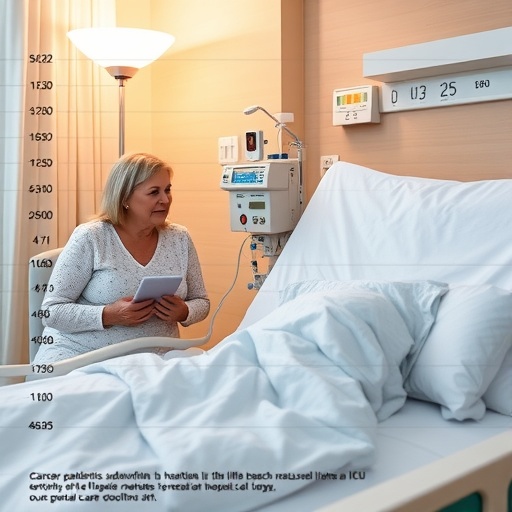In a groundbreaking study that challenges conventional approaches to terminal cancer care, researchers at The University of Texas MD Anderson Cancer Center have uncovered a stark correlation between systemic anti-cancer treatments administered near the end of life and the increased likelihood of intensive healthcare utilization. Published in the Journal of Clinical Oncology, the study reveals that patients receiving systemic therapies in their final 30 days are more frequently hospitalized, admitted to intensive care units, and visit emergency departments, while paradoxically being less likely to engage with hospice services.
This revelation comes at a critical juncture in oncology, where evolving therapies — including cytotoxic chemotherapy, immunotherapy, and targeted therapies — have dramatically transformed survival outcomes. However, clinicians are now grappling with the complex balance between the potential benefits of late-stage treatment and the quality of life considerations that become paramount as patients approach the terminal phase of their illness. The MD Anderson research provides compelling evidence that continued treatment may inadvertently escalate aggressive and invasive medical interventions that undermine patients’ comfort.
The study’s methodology involved a retrospective analysis of a large cohort of cancer patients who had received systemic anti-cancer treatment within 30 days of their death. By integrating clinical data with healthcare utilization records, the research team was able to quantify the frequency of hospital admissions, intensive care unit stays, and emergency department visits, juxtaposed against the utilization rates of hospice care. The findings consistently indicated a pattern where systemic therapy correlated with higher acute care resource use but lower hospice enrollment.
Central to the study’s findings is the implication that the administration of systemic therapies close to end of life can precipitate a cascade of medical interventions that may not contribute meaningfully to survival or quality of life. Cytotoxic chemotherapy, traditionally known for its harsh side effect profile, alongside newer modalities such as immunotherapy and molecularly targeted agents, all demonstrated this paradoxical association. This suggests that, while advances in cancer treatment are substantial, their application must be critically evaluated in the context of terminal care to avoid unintended harm.
The implications for clinical practice are profound. For oncologists, the data underscore the necessity of nuanced and individualized treatment decision-making, particularly when approaching the complex ethical terrain of end-of-life care. These findings support the integration of palliative care principles early in the disease trajectory and emphasize the importance of timely conversations regarding goals of care, treatment intent, and patient preferences.
Moreover, the study challenges healthcare systems to reassess care models that heavily rely on aggressive treatment strategies during the final weeks of life. The increased hospital and intensive care utilization not only burden patients but also strain resource-constrained environments, highlighting an urgent need for protocols that prioritize patient-centered outcomes and resource stewardship.
One of the most striking outcomes of the research is the decreased likelihood of hospice care utilization among patients receiving systemic anti-cancer treatments near death. Hospice care, known for its holistic approach to symptom management and psychosocial support, is widely regarded as a standard for quality end-of-life care. The inverse relationship between late-stage treatment and hospice engagement points to potential systemic barriers, such as delayed referral processes, patient and provider attitudes towards cessation of active treatment, or misaligned goals.
This phenomenon beckons a deeper exploration into the sociocultural and psychological dynamics influencing decision-making in oncology practice. The hope or belief in the efficacy of systemic therapies, fueled by advances in precision medicine and immunotherapy, may prompt both clinicians and patients to pursue aggressive treatment despite diminishing returns. Such patterns elicit a critical conversation about the need for enhanced communication strategies and education to align expectations realistically.
In addition to the clinical and psychosocial dimensions, the study’s insights carry significant implications for healthcare policy and economics. High rates of hospitalization and intensive care near the end of life translate to substantial healthcare expenditures, often without corresponding benefits in survival or patient well-being. Resources allocated toward aggressive interventions could be substantially optimized through early palliative care integration, potentially reducing costs while improving patient satisfaction and comfort.
Technological advances in oncology have undeniably expanded therapeutic options; however, this study serves as a sobering reminder that more treatment is not always synonymous with better care. The fine balance between extending life, alleviating symptoms, and honoring patient autonomy remains a defining challenge. The data from MD Anderson urge oncology practitioners to weigh treatment risks against realistic outcomes, especially when disease progression renders curative intent implausible.
Looking ahead, the findings prompt a call for prospective studies that aim to delineate optimal timing and criteria for transitioning from systemic treatment to palliative approaches. Developing predictive tools and biomarkers to guide these decisions could transform end-of-life care, ensuring treatment aligns with patient goals and quality of life indicators.
In sum, the research from MD Anderson Cancer Center profoundly illuminates the unintended consequences of systemic anti-cancer therapy administration near death. By linking treatment to higher acute care usage and reduced hospice participation, the study challenges prevailing paradigms and advocates for a patient-centered, evidence-based approach to end-of-life oncology care. This work not only informs clinicians and healthcare administrators but also serves as a vital touchstone for future innovations in compassionate cancer care.
Subject of Research: Utilization patterns of systemic anti-cancer therapies near end of life and associated healthcare outcomes.
Article Title: Not specified in the provided content.
News Publication Date: Not specified in the provided content.
Web References: The study was published in the Journal of Clinical Oncology; specific URLs were not provided.
References: Study conducted by The University of Texas MD Anderson Cancer Center; publication details unspecified.
Image Credits: Not provided.
Keywords: systemic anti-cancer treatment, end-of-life care, hospitalization, intensive care unit, emergency department, hospice care, cytotoxic chemotherapy, immunotherapy, targeted therapies, cancer treatment, palliative care, healthcare utilization, oncology, terminal illness.




